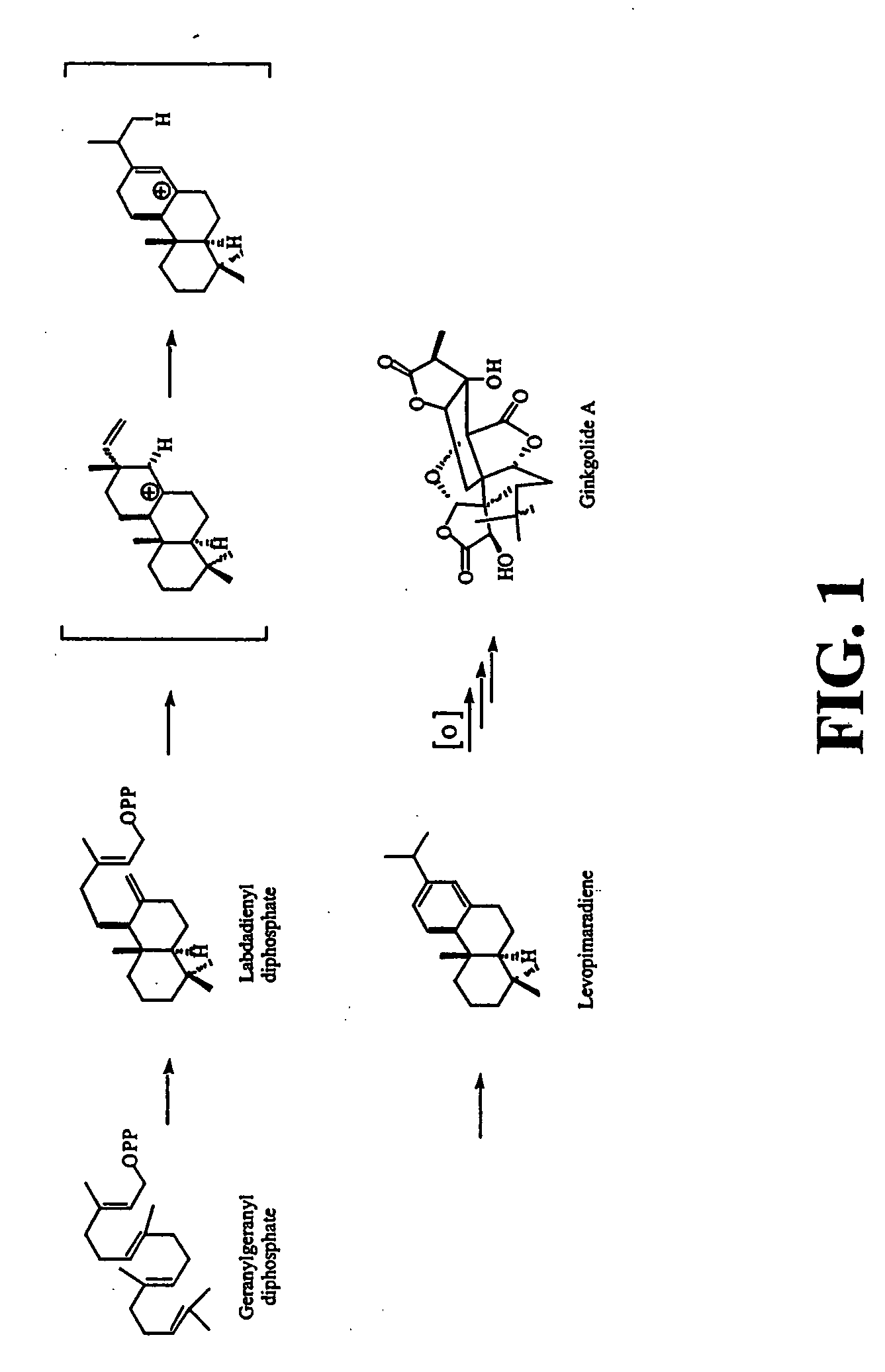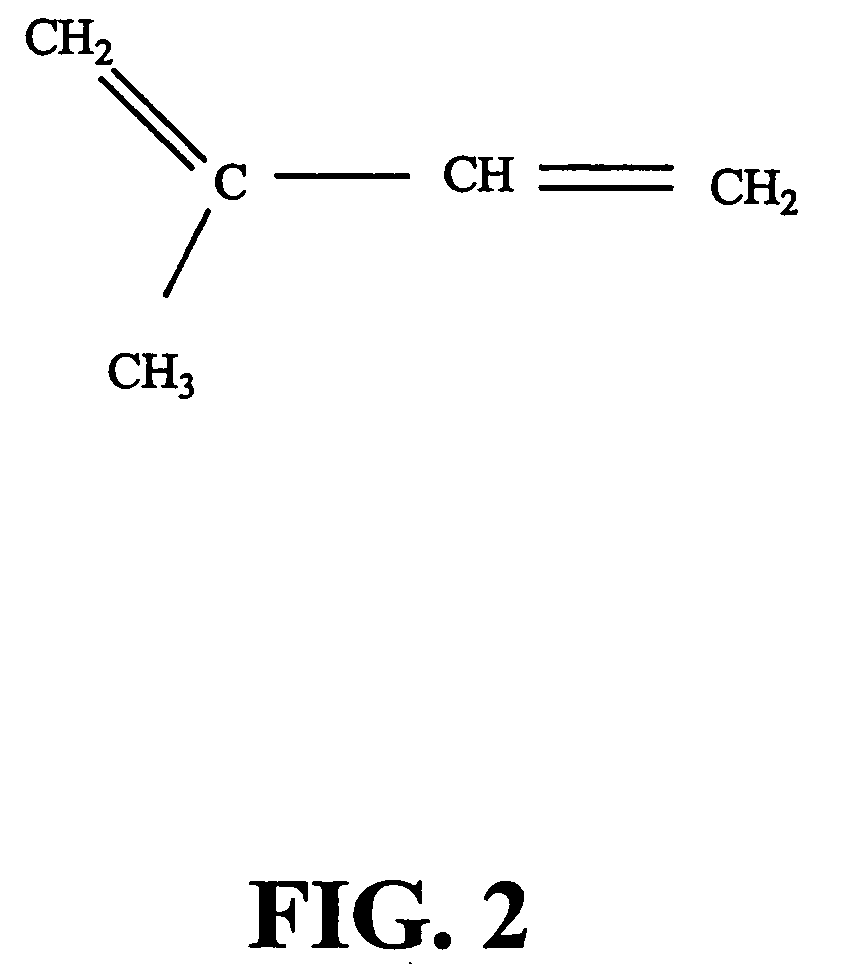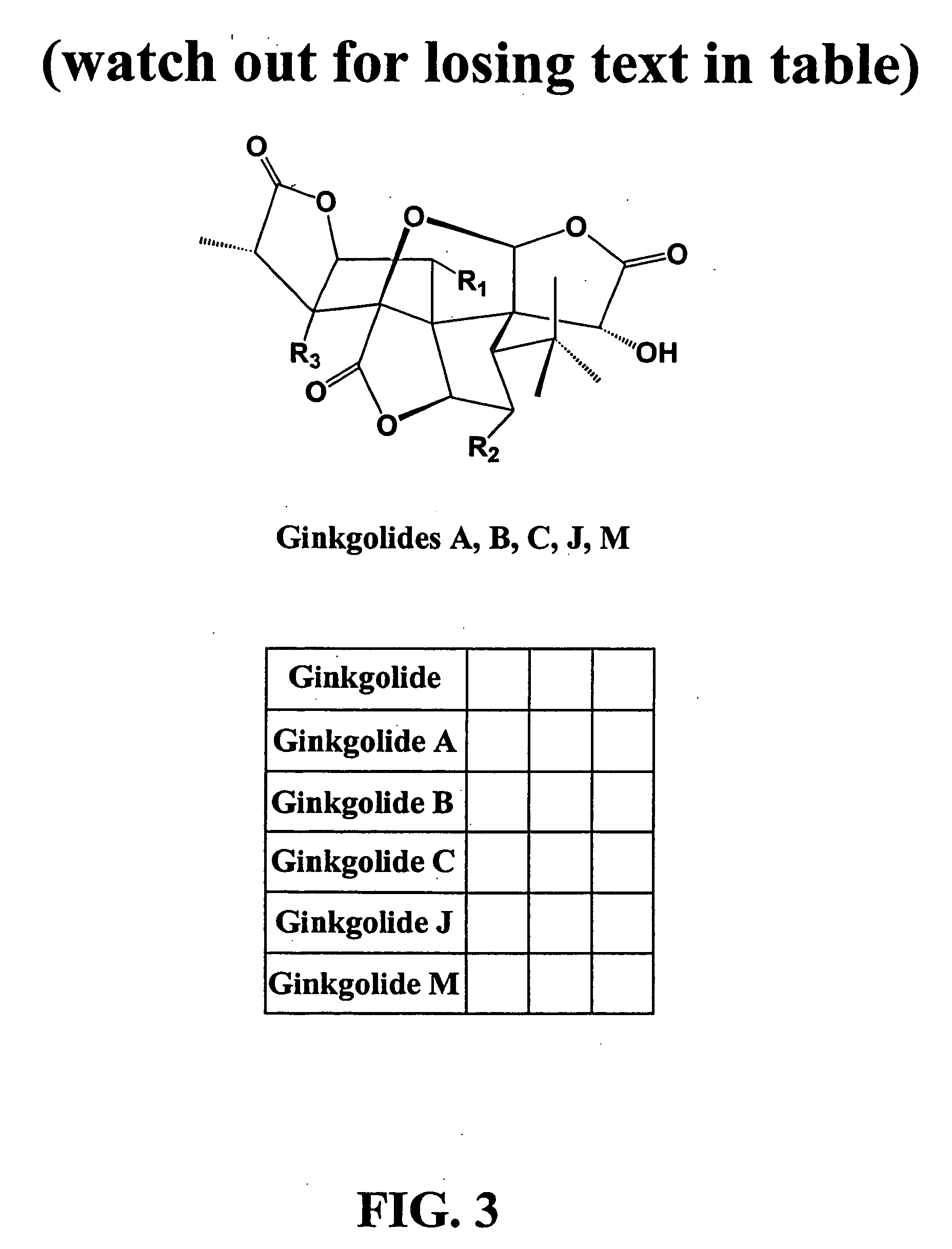Ginkgo biloba levopimaradiene synthase
a technology of levopimaradiene and ginkgo biloba, which is applied in the field of molecular genetics, organic chemistry, molecular biology, etc., can solve the problems of reducing the commercial development of ginkgoides as therapeutic agents, affecting the effect of ginkgo biloba, and reducing the number of ginkgo biloba levopimaradiene synthases
- Summary
- Abstract
- Description
- Claims
- Application Information
AI Technical Summary
Benefits of technology
Problems solved by technology
Method used
Image
Examples
example 1
Methods-Plant Materials, Substrates, and Reagents
[0193]Ginkgo biloba “white nut” seeds were purchased from Dynasty Supermarket (Houston, Tex.). The seeds were stored at 4° C. for several days before sowing. Embryos were cultivated under aseptic conditions in an agar medium supplemented with D-glucose, L-glutamine, and Heller's salts at room temperature in the dark for four to six weeks (Schwarz, 1994). Synthesis of geranylgeraniol was performed as indicated in Ruan (1999) and Coates et al. (1978). Synthesis of geranylgeranyl diphosphate was performed as indicated by Corey et al. (1972), Davisson et al. (1985), and Davisson et al. (1986). Levopimarol was synthesized from levopimaric acid (Helix Biotech; New Westminster, British Columbia, Canada) according to procedures of Abad et al. (1985), Gigante et al. (1999), and Ayer and Talamas (1988). (6E,10E)-Geranyllinalool and pyridinium dichlorochromate were obtained from Fluka. All other reagents were obtained from either Sigma / Aldrich ...
example 2
Methods-G. Biloba mRNA Isolation, cDNA Library Construction, and Quality Assessment
[0194] At active growth, embryonic roots were harvested at 33 days (HSG1) and 40 days (HSG2) and snap-frozen in liquid nitrogen. Total RNA was isolated using a modified protocol for total RNA isolation from pine trees (Chang et al., 1993) in which an acidic phenol / chloroform (1:1) extraction was included prior to ethanol precipitation. Poly(A)+RNA was selected with oligo(dT)cellulose (Life Technologies MessageMaker Poly(A)+Syringe Kit) and purified using Sephadex gel chromatography (Boehringer Mannheim Mini Quick Spin RNA Column) according to manufacturer's instructions. cDNA libraries were prepared using the SuperScript™ Plasmid System for cDNA Synthesis and Plasmid Cloning (Life Technologies). cDNA constructs (SalI / Not I) were subcloned into both the E. coli expression vector pSPORT1 and the centromeric yeast shuttle vector pRS316GAL (Liu and Krizek, 1992). The resultant plasmids were transformed b...
example 3
Methods-Levopimaradiene Synthase Gene Cloning
[0196] PCR degenerate primers were designed according to sequence similarity between gymnosperm terpene synthases Abies grandis abietadiene synthase (SEQ.ID.NO:3), Abies grandis E-α-bisabolene synthase (GenBank Accession No. AF006195; SEQ.ID.NO:13 or GenBank Accession No. AF006194; SEQ.ID.NO:14; corresponding to the amino acid sequence in GenBank Accession No. AAC24192.1; SEQ.ID.NO:15 or AAC24191.1; SEQ.ID.NO:16, respectively), Abies grandis δ-selinene synthase (GenBank Accession No. U92266; SEQ.ID.NO:17; corresponding to the amino acid sequence in GenBank Accession No. AAC05727.1; SEQ.ID.NO: 18); Abies grandis γ-humulene synthase (GenBank Accession No. U92267; SEQ.ID.NO:19; corresponding to the amino acid sequence in GenBank Accession No. AAC05728.1; SEQ.ID.NO:20), Abies grandis pinene synthase (GenBank Accession No. U87909; SEQ.ID.NO:21; corresponding to the amino acid sequence in GenBank Accession No. AAB71085.1; SEQ.ID.NO:22); Abies ...
PUM
| Property | Measurement | Unit |
|---|---|---|
| dry weight | aaaaa | aaaaa |
| temperatures | aaaaa | aaaaa |
| temperatures | aaaaa | aaaaa |
Abstract
Description
Claims
Application Information
 Login to View More
Login to View More - R&D
- Intellectual Property
- Life Sciences
- Materials
- Tech Scout
- Unparalleled Data Quality
- Higher Quality Content
- 60% Fewer Hallucinations
Browse by: Latest US Patents, China's latest patents, Technical Efficacy Thesaurus, Application Domain, Technology Topic, Popular Technical Reports.
© 2025 PatSnap. All rights reserved.Legal|Privacy policy|Modern Slavery Act Transparency Statement|Sitemap|About US| Contact US: help@patsnap.com



